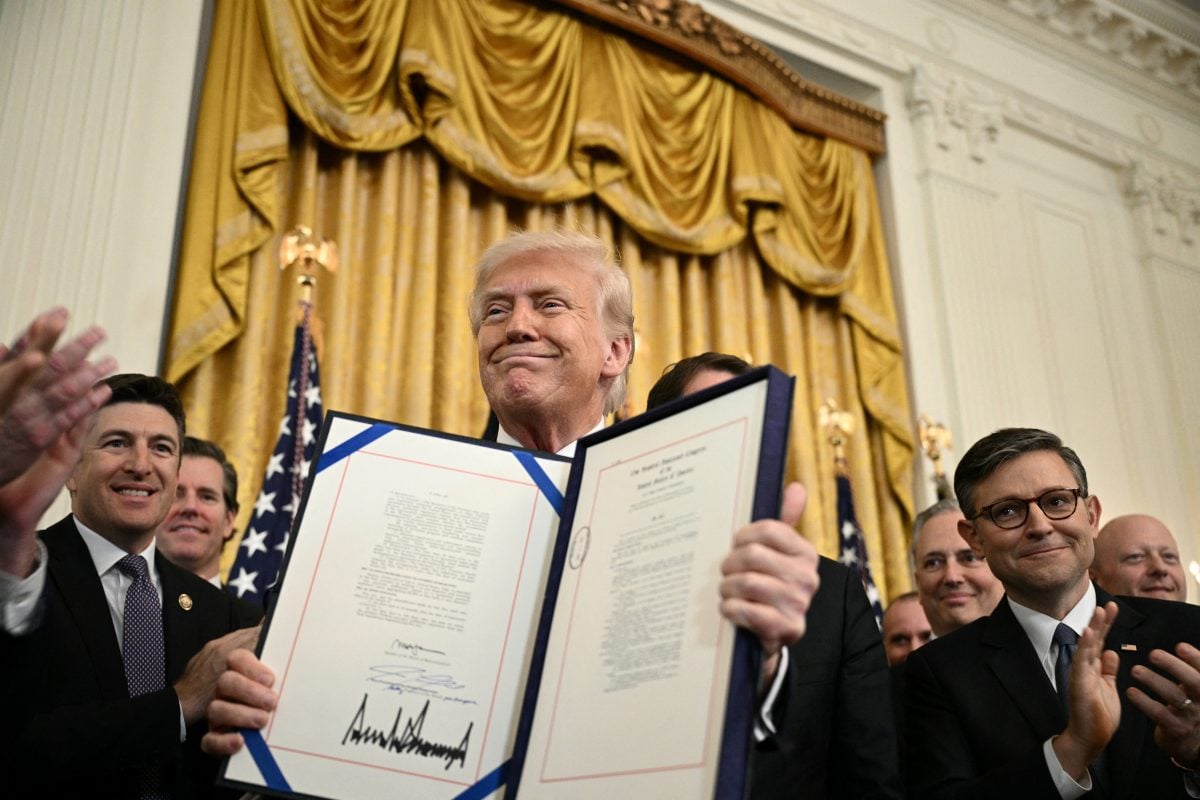Stablecoins have emerged as a dominant force in global payments, with reports of their total transfer value reaching $27.6 trillion in 2024 – eclipsing the combined annual transaction volume of Visa and Mastercard, two of the world’s most prominent payment networks. They are a type of cryptocurrency that is pegged to a specific reserve asset. Most are pegged to the US dollar, since it is the world’s reserve currency; some are linked to other traditional “fiat” currencies. The two largest stablecoins currently available on the crypto market are Tether (USDT) and USD Coin (USDC), both of which claim to be backed 1:1 by US dollars or US Treasury securities.
Unlike volatile cryptocurrencies such as Bitcoin, stablecoins are designed to maintain a constant value that is linked to the underlying reserve asset. Proponents say this makes them ideal for payments, savings and remittances.
Adoption picks up in Africa
Stablecoins have gained considerable traction in African markets, where currency depreciation, dollar shortages, inflation and limited access to banking services have pushed many to consider using cryptocurrencies for cross-border transactions and personal savings.
“Africa is leading the world in terms of this technology,” says Chris Maurice, co-founder and CEO of Yellow Card, a stablecoin payments infrastructure provider specialising in emerging markets. “You have Nigeria in the top three globally; Kenya and South Africa in the top 15; Tanzania, DR Congo and many others in the top 25,” he tells African Business. Stablecoins accounted for 43% of crypto transaction volume in sub-Saharan Africa in 2024, according to an industry report by Yellow Card. Nigeria, the continent’s largest stablecoin market, recorded nearly $22bn in transactions between July 2023 and June 2024.
Maurice argues that stablecoin adoption in Africa is driven by “the most practical” use case. “In Africa you have the most transactions in the world under a thousand dollars. These are people transferring money for real use cases. It’s quite an exciting trend that is only going to accelerate,” he says.
Yellow Card partners with banks, financial institutions and businesses across Africa to facilitate the use of stablecoins for international payments, treasury management and access to US dollar liquidity.
Banks warming up
Maurice notes that there has been a marked increase in demand for its services from African banks and financial institutions. “We’re seeing banks and large financial institutions across the continent start to get into this technology and use it in a way that really makes sense for them,” he says. “The ability for African banks to be able to use stablecoins to make payments that don’t have to go through New York appeals to many. The value is huge for sovereignty.”
Maurice notes that African banks, once wary of cryptocurrencies, are now showing a marked shift in attitude. “The biggest thing you are starting to see now is banks across the continent more interested in things like tokens and stablecoins. You haven’t seen a ton of it historically, but you are starting to see these banks move into it aggressively.”
“There are several major banks that we are working with on issuing local stablecoins, on using local stablecoins [those backed by local currencies] and on US dollar stablecoins to improve payment rails, and improving the system overall for those countries,” he says, without naming the banks.
Regulation must catch up
Maurice laments that Africa lags other regions globally in a crucial area: regulation. Many African countries still lack a clear regulatory framework for the digital assets industry. This, he argues, makes it harder for investors to make informed decisions, limiting innovation, new investment and job creation in the industry.
“You have regulations in the US, Europe and many parts of the world, so the continent is starting to fall behind from a regulatory standpoint. African countries opening up the regulation to really promote stablecoins in a way that encourages innovation is key,” he says.
“Innovation obviously is always going to be ahead of regulation, which is reactive by nature. However, at this point there has been enough time for regulators and everybody to see the benefits that this technology offers,” he adds.
In July, US President Donald Trump signed the GENIUS Act (Guiding and Establishing National Innovation for US Stablecoins Act), which codifies the use of stablecoins (Trump is pictured above with the act). The Trump administration says the act requires stablecoins to have 100% reserve backing with liquid assets like US dollars or short-term Treasuries and requires issuers to make monthly, public disclosures of the composition of reserves. It said the legislation would tackle illegal usage while making the US “the crypto capital of the world.”
In Africa, Maurice suggests that central banks should lead the charge by taking advantage of “regulatory sandboxing” to gain a clearer understanding of the technology. Regulatory sandboxing is a framework that allows companies – especially in fintech and emerging tech – to test innovative products, services, or business models in a controlled environment under the supervision of a regulator.
Sanjeev Gupta, a senior fellow emeritus at the Center for Global Development, warns that, without robust regulation, rapid stablecoin adoption could weaken fiscal stability in African countries. “Without robust regulatory frameworks and strengthened tax administration, stablecoins could narrow the tax base and undermine fiscal and development goals,” he notes. “Over 30% of income in developing countries comes from the underground economy, where taxes are routinely evaded. The growing use of cryptocurrencies risks further expanding this unreported sector, compounding revenue mobilisation challenges.”
Gupta contends that, to mitigate these risks policymakers will need to establish strict regulatory frameworks for cryptocurrencies and stablecoins, including mandatory exchange registration, tax reporting for cryptocurrency transactions and targeted capital controls. Because fiat-backed stablecoins like USDT and USDC are issued by private entities, there are also growing concerns that their increased use could undermine central banks’ control over their countries’ money supply.
Protecting value against foul play
Indeed, the collapse of TerraUSD (UST) in 2022 wiped out more than $40bn in market value. It later emerged that TerraUSD was not backed by fiat currency or tangible assets, but instead relied on algorithmic market incentives to maintain its peg – raising doubts about the credibility of stablecoin issuers and their claims of asset-backed stability. In August Do Kwon, the South Korean behind Terra USD and Luna, pled guilty to two US charges of conspiracy to defraud and wire fraud.
According to a paper published in 2023 by the Reserve Bank of South Africa, limited regulatory influence over stablecoin issuers – whether domiciled domestically or abroad – may result in spillovers from the crypto ecosystem to the traditional financial system. The risks are particularly grave if regulators are unable to impose prudential requirements on stablecoin issuers to guarantee that stablecoin can be redeemed at face value in traditional cash even during a run on it, when holders withdraw en masse.
“As demonstrated through the collapse of TerraUSD, a key risk is the actual materialisation of a run on a stablecoin issuer (whether it is a bank or non-bank) which, given the interconnectedness between the traditional financial and stablecoin systems, could destabilise the existing financial system,” the central bank notes.
In the wake of the TerraUSD collapse, regulators across major jurisdictions tightened disclosure requirements for stablecoin issuers, mandating greater transparency to help users make informed decisions. In markets such as the UK and Hong Kong, issuers are now required to provide daily updates on the volume of stablecoins in circulation and the composition of reserves backing them. Independent audits of reserve assets – and the public release of audit findings – are increasingly viewed as standard practice. African regulators need to move faster in this direction, Maurice argues.
“This is a technology in which Africa is in the first-mover zone. There is a unique opportunity that the continent did not have with things like the internet. That is why it is so important for regulators to make a move here,” says Maurice.
Want to continue reading? Subscribe today.
You've read all your free articles for this month! Subscribe now to enjoy full access to our content.
Digital Monthly
£8.00 / month
Receive full unlimited access to our articles, opinions, podcasts and more.
Digital Yearly
£70.00 / year
Our best value offer - save £26 and gain access to all of our digital content for an entire year!

 Sign in with Google
Sign in with Google 



